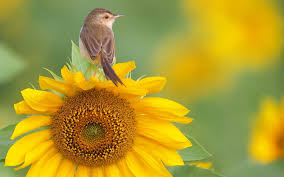Connect with CRT Sunflower Competition
Topic outline
-
In 2021 we hosted our very first CRT Sunflower Photographic Competition!
Please get in touch if you would like us to run another competition this year. For details of last years competition see below.
I

Share your pictures to see who can:
1. Grow the Tallest Sunflower
2. Grow the largest head on a Sunflower
3. Take the most creative photograph
4. The most blooms on a single sunflower plant
Submit photos that include measurements for entries 1+2
The winner in each category will receive a £50 shopping voucher of their choice.
To request your free pack of sunflower seeds, please email crt.hub@coalfields-regen.org.uk.
Please share your progress with us on social media and we will share it with others.
-
Entries:

Entries are only valid to people living in a community that is eligible to receive support from Coalfields Regeneration Trust.Limit of one entry per person / per class. Multiple family members may enter.
Seeds will not be available from CRT after April 15th
Each entry may only be entered in one category.
All entries will be in the form of a photograph. Categories 1 & 2 must include measurements.
Participants, by taking part, will be consenting to having any photographs used for publicity purposes.
CRT Staff and families are ineligible.
Cost:
There is no cost to taking part in the competition.Starter pack:
On request you will receive by post a pack of six giant sunflower seeds.Categories:
There are 3 Categories1. Grow the Tallest Sunflower
2. Grow the largest flower head
3. Take the most creative photograph
4. The most blooms on a single sunflower plant
Sunflowers must be grown by the entrant.
The sunflower seeds supplied are all of a giant variety.
The Tallest Sunflower will be measured from the soil line to the top of the head. Measurements to be supplied in centimetres.
The Biggest Head will be measured as the diameter of the entire flower head. Measurements to be supplied in centimetres.
The most creative photograph will be determined at the judges’ discretion. Judging will be carried out by members of the Dunfermline Photographic Club. The judges' decisions are final.
Deadline
Closing date for entries which will be submitted by email is 31st October. Winners will be announced on our web space www.crtconnect.org.uk on 5th November. -
Sunflowers need sun. They do best in fertile soil in a sheltered spot, but will also do well in containers. However, if you want your sunflower to grow really tall, it’s best to plant it in the ground.
-
Sow sunflower seeds from April to May, individually in 10cm pots of peat-free, multi-purpose compost. Plant out into the garden when all risk of frost has passed, from early June.
-
To grow sunflowers you need a sunny, sheltered spot and a good soil – add plenty of well-rotted manure or garden compost before planting, if you can. Protect the young plants from slugs and snails and water your sunflowers regularly. You may also need to stake them if they’re in an exposed position.
To Sow Indoors: Sow sunflower seeds into individual pots of peat-free, multi-purpose compost in April. Sow one seed per 7.5cm pot. Push the seed 1.5cm into the compost and water in. Cover pots with a clear plastic bag and place in a cool but bright place.
After the sunflowers have germinated, keep them well-watered until they’re ready to plant out at the end of May. Prepare soil by removing weeds and add plenty of organic matter. Plant the sunflowers at the same depth they were in the pot. Water well and stake plants with a bamboo cane or similar.
To Sow Outdoors: March-May sow thinly1.5cm deep in flowering position. Place 2 seeds per position. Thin out to the strongest seedling once established at a distance of 30cm/12in apart. Large plants will require good soil and plenty of moisture.
Flowers from June to October to a height of between 1.8 - 4.5 m / 6 - 15 ft

-
Annual sunflowers need plenty of water. Feed them with tomato feed just before flowering. Don’t allow plants to dry out as very tall varieties will have a job to recover.
Very tall varieties may need the support of a garden cane – especially when growing in an exposed position.
After flowering, leave the faded flower head intact so the birds can feast on the seeds. Better still, take some seed and leave them to dry for a few days, before storing in a paper envelope in a dry spot, so you can sow them the following year! Once the seed has been eaten or picked, pull out the entire plant and put it on the compost heap.
